|
Carlos Williams requested a Flash comics chronology. Personally, I'm not a big fan of reading a comic about someone who runs fast. The character is much better suited for TV, and the CW is doing an incredible job with the current Flash TV show, and its spin-off, "Legends Of Tomorrow". "Arrow" sucks, though. We made it nearly four entire seasons without Barry Allen! But now, here he is all dressed in red and yellow and running quickly towards and away from things. Season four is named for a major event in the DC Universe. An event that made for a really interesting season of the actual Flash TV show on the CW, but made for a lackluster comic event. Not unreadable but certainly more eyerolly than your average Geoff Johns book. I spend most of this entry yelling at Barry Allen (because he fucken deserves it), do not mistake this as me criticizing Francis Manapaul's run on The Flash. I think he did an admirable job, given what he had to work with. Idiot. Season Four: Flashpoint (showrunner: Francis Manapaul) Serial 1: Flash The Dastardly Death Of The Rogues
written by Geoff Johns, art by Francis Manapaul and Scott Kolins Welcome back to continuity Barry Allen. Isn't it nice and calm he---Barry, Did You Murder Someone In The Future? Did you? Did you? Did you murder a rogue? Are you a rogue murderer, Barry? I know you're all like post-iceberg Steve Rogers right now, but Jesus, man, you can't just kill a rogue in the future! I'm going to have to ask you to step outside the timeline. Rogue Future. 2 episodes Serial 2: The Flash Road To Flashpoint written by Geoff Johns, art by Francis Manapaul Y'all need to stop messing with the timeline, right now, ok? Just because a girl doesn't like you, doesn't mean you go back in time and try and make a better first impression. If your mom's death was an important factor in you becoming the person you are, you can't go back and save your mom. It's real simple, assholes. Time moves forward. If you don't stop messing with timelines, they're going to break, and we're going to end up in a complicated, overwritten crossover, and nobody wants that. Don't Cross The Timestreams! 2 episodes Serial 3: Flashpoint, Flashpoint The Flash written by Geoff Johns, art by Andy Kubert and others Are you happy now, Barry? You broke the universe. Now Bruce Wayne is dead, his dad is Batman, his mom is The Joker. You Really Fucked Up. And you don't have powers now. Wait. What are you doing? You're trying to recreate the accident that gave you your powers? Barry, that's a terrible idea. Barry, watch out for the lightning. Barry! Ugh. Idiot. Flashpoint. 4 episodes Serial 4: The Flash Move Forward written by Francis Manapaul and Brian Buccellatto, art by Francis Manapaul Good going, Barry. Now we're in a Different Wrong Universe. We undid all that Flashpoint stuff, but what is this New 52 crap? I miss Wally West. You really suck at this Barry. I get that it's difficult when you're fighting an opponent who can be everyone all at once, but you deserve this. This is all the fans of comics, trying to punch you in the head for being a jackass and ruining continuity twice in a span of three years. You're lucky you've had an amazing artist drawing your adventures because you suck. Mob Rule. 2 episodes Episode 11: The Flash Rogues Revolution written by Francis Manapaul and Brian Buccellatto, art by Francis Manapaul Of course the rogues are mad at you, Barry, you've ruined Everyone's lives. Especially DC comic readers. You couldn't be more of a disappointment if you ripped off your mask and revealed you were Dan Didio all along. Now Captain Cold is being targeted by the rogues? What have you done, Barry, you sonofabitch? Cold War. 1 episode Serial 5: The Flash Gorilla Warfare written by Francis Manapaul and Brian Buccellato, art by Francis Manapaul Apes, Barry. Damn, dirty apes. And all because you dicked around with the timeline. Now the same rogues that were just trying to kill you are going to have to help you, or the whole city will be killed by non-human primates. Good, going, jackass. Charlton Heston would have kicked you in the teeth. Kneel Before Grodd. 2 episodes Serial 6: The Flash Reverse Flash written by Francis Manapaul and Brian Buccelato, art by Francis Manapaul Oh, look, another fast running dick in a brightly colored suit. I hate you Barry Allen. You and the rest of your treadmill destroying speedwalkers. Why don't you just go to Gotham and fuck up their city for a while, too. Prick. The End Of An Error. 2 episodes Season four is fifteen episode of Barry Allen being a complete and utter toolbag.
0 Comments
Carlos Williams requested a Flash comics chronology. Personally, I'm not a big fan of reading a comic about someone who runs fast. The character is much better suited for TV, and the CW is doing an incredible job with the current Flash TV show, and it's spin-off, "Legends Of Tomorrow". "Arrow" sucks, though. During the final episode of last season, the whole speed force thing disappeared, and it seemed like the superheroes whose only powers were running fast were bound to live a boring life. How am I supposed to make a season of episodes out of this? I can't imagine they would Immediately Undo the disappearance of the speed force. Would they? Captain Cold does his best Ray Charles impression. It's not very good. art by Scott Kolins Season Three: Gone Rogue (Showrunner: Geoff Johns) Serial 1: The Flash Fastest Man Alive Lightning In A Bottle
written by Tony Bilson and Paul DeMeo, art by Ken Lashley With Wally West and the speed force having having disappeared during Infinite Crisis, Bart Allen, formerly Impulse, formerly Kid Flash, is just trying to live a normal life working in a factory. But when another freak accident returns his powers, Bart becomes the fastest man alive and reluctantly picks up the mantle of The Flash. Do The Bartman. 2 episodes Serial 2: The Flash Fastest Man Alive Full Throttle written by Danny Bilson, Paul DeMeo, Mark Waid, Marc Guggenheim, art by many The Flash's former nemesis, Inertia, hears that Bart has his powers back and teams up with the rogues to try and take his speed away. Luckily, the bad guys never win in a situation like this. Inertia. 2 episodes Serial 3: The Flash The Wild Wests written by Mark Waid, John Rogers and Keith Champagne, art by Daniel Acuna, Freddie Williams II and Doug Braithwaite Oh, hey, look, Wally is back. And he and his family have some adventuring to do both in the DC Universe proper and on another planet. Welcome back Wally, you wacky Flash, you. Where's Wally. 2 episodes Serial 4: Final Crisis Salvation Run written by Bill Willingham and Matthew Sturges, art by Sean Chen and Walden Wong Final Crisis is an unreadable, continuity intensive mess that no decent editor would have allowed to be published. But there were some fun spin-off series, including this one. THe President has decided that the supervillain population is way out of hand, and so Amanda Waller and The Suicide Squad round up the worst villains, including the rogues who overstepped their bounds in Full Throttle, and ship them to their own planet, which is supposed to be peaceful buttttttt, as it turns out, it's designed to kill intruders. Whoops. Salvation Run. 3 episodes Serial 5: Final Crisis Rogues Revenge written by Geoff Johns, art by Scott Kolins Having survived their time on Salvation Run, the remaining rogues return to Keystone City and try to decide whether to disband and live peacefully or take their revenge on Inertia. This is one of the most fun villain-centric comics of all-time. Rogue's Revenge. 3 episodes Serial 6: Flash Rebirth written by Geoff Johns, art by Ethan Van Sciver Reading the aforementioned clusterflush, Final Crisis, did not adequately explain why Barry Allen is suddenly back in the DC Universe. Luckily, Geoff Johns wrote this whole miniseries explaining how all the flashes will fit into the world. Please Barry Me With It. 2 episodes Episode 15: Blackest Night Black Lantern Corps Vol 02 written by many, art by many Blackest Night is mainly a Green Lantern event, but as part of the storyline, all the dead heroes and villians are revived. To celebrate it, they released some "resurrected" issues, where a creative team of a canceled book reunited to tell a story about how their book was effected by Blackest Night. This volume contains a bunch of stories from the DC Universe, including Geoff Johns and Scott Kolins telling a Barry Allen/Wally West story. Hmmm...Barry Allen, you say? Season 3 is 15 episodes with no real protagonist. Carlos Williams requested a Flash comics chronology. Personally, I'm not a big fan of reading a comic about someone who runs fast. The character is much better suited for TV, and the CW is doing an incredible job with the current Flash TV show, and it's spin-off, "Legends Of Tomorrow". "Arrow" sucks, though. The first season was all speedsters all the time. We hardly got any time with any villains who moved at normal speed. Well, Geoff Johns (who wrote every episode of this season) fixes that by bringing back the classic Flash rogues and having their interactions with Wally West and the universe be gloriously complicated and fun. Yes, there are dire consequences from time to time, but this season is bright, weird, and moves really quickly toward the season's bizarre conclusion. Come on, rogue, let your morals go with the flow, you know you can do it art by Brian Bolland Season 2: Keystone Cop (showrunner: Geoff Johns) Serial 1: The Flash By Geoff Johns Book One
written by Geoff Johns, art by Scott Kolins, Ethan Van Sciver, and Angel Unzueta Season two finds Wally in media res, traveling through various alternate Earths. He loses touch with the speed force and ends up teaming up, against his will, with several classic Rogues such as Captain Cold and Mirror Master. It's a weird but fun romp that changes when he meets an alternate version of his dead ex, and decides to hang out there for a while. It's fairly silly at times but seeing non-running villains is a nice change of, sorry, pace. Wonderland. 2 episodes Blood Will Run. 1 episode Iron Heights. 1 episode Serial 2: The Flash By Geoff Johns Book Two written by Geoff Johns, art by Angel Unzueta and Doug Hazlewood Wally West, protector of Keystone City and Central City has a vast amount of villains, and many of them are working in concert to keep The Flash occupied. The costumes on both the villains and the helpful heroes (Superman and Cyborg each show up to help Wally out) are pretty post-90s extreme and very brightly colored, which is fitting with the over-the top madcapness of this particular chapter in Wally's tenure as The Flash. New Rogues. 3 episodes Serial 3: The Flash By Geoff Johns Book Three written by Geoff Johns, art by Scott Kolins and Doug Hazlewood Rogues antagonizing rogues helping rogues antagonizing Flash. The relationships between the characters from this season of Flash get really fascinating as more and more characters get folded into the end of Johns's run on The Flash. In the end, we do end up with an evil speedster takes on Flash and other speedster heroes, but it's not as relentless as the first season. The Brave & The Beaten. 1 episode Run Riot. 1 episode Gorilla Warfare. 1 episode Zoom. 2 episodes Serial 4: Infinite Crisis written by Geoff Johns, art by Phil Jimenez, George Pérez, Ivan Reis, and Jerry Ordway I don't enjoy DC's Crisis books, and this is no exception. There are too many characters, too many plot points, too man mcguffins, and too many far reaching consequences. But this is Geoff Johns's reset of the DC universe, so, of course all of the Flash characters are involved. And, amongst the carnage something pretty severe happens to Wally West. Infinite Crisis. 3 episodes Season 2 is fifteen episodes in Wally World where no one punches out a moose. Carlos Williams requested a Flash comics chronology. Personally, I'm not a big fan of reading a comic about someone who runs fast. The character is much better suited for TV, and the CW is doing an incredible job with the current Flash TV show, and it's spin-off, "Legends Of Tomorrow". "Arrow" sucks, though. If I were to make a five season chronology for The Flash, I would skip out on all the silver-age Barry Allen stories. So, unlike some of the previous chronologies, you're not going to get a ton of origin stories and first appearances of villains. The Flash will follow Wally West (who is not like the Wally West in the TV show...instead of being Iris's brother, he is her nephew) and the villains he inherited from the previous Flash. Fuck you uncle Barry! art by Greg Larocque Season 1: Terminal Velocity (Showrunner: Mark Waid) Serial 1: The Flash By Mark Waid Book One
written by Mark Waid, art by Greg Larocque, Jim Aparo, and Pop Mhan Wally West is Barry Allen's favorite nephew. But Barry has always been careless with chemicals and lightning, so he accidentally, and against astronomical odds, recreates the situation that turned him into The Flash, thus turning Wally into Kid Flash. Idiot. But it's not too long before Wally has to go from Kid Flash to regular old Flash when Uncle Barry disappears saving the universe. Kid Crisis. 2 episodes. Serial 2: The Flash By Mark Waid Book Two written by Mark Waid, art by Greg Larocque and Sal Velluto It seems like just one serial ago when Wally West was Kid Flash and Barry Allen rescued the universe, meaning he was gone forever. Oh, wait. It was. Then how is Barry back already? And why is he such a dick? Original Recipe Flash, Jay Garrick, and some Green Lanterns step in to try and solve the mystery. The Premature Return Of Barry Allen . 2 episodes Serial 3: Impulse Reckless Youth, The Flash Terminal Velocity written by Mark Waid, art by many One of the things that drives me crazy about Flash books is that there are So Many Characters whose power is that they can run fast. And this series adds even more! Bart Allen, Barry's grandson from the future (comics, sigh), finds himself in the present, and it's up to Wally West, Jay Garrick , Johnny and Jesse Quick, and Max Mercury (alliteration, ugh) to train him, lest he become any more of a bratty nuisance. Impulse Control. 3 episodes Episode 8: The Flash Dead Heat (written by Mark Waid, art by Oscar Jiminez, and Humberto Ramos) The lamest part of the Flash tv series is how terribly CGI the villain Savitar looks. It's so substandard to the other effects on the show that I have a hard time taking him seriously. Well, in this book we meet Oh So 90s Savitar, who looks like Rob Liefeld designed him but someone with talent and opposable thumbs got to draw him. Once again, all the speedsters are in this book. And Savitar, also a speedster, has brought a new army of speedsters. So much running. So much hair. Faster Than The Fastest Man Alive. 1 episode Episode 9: The Flash Race Against Time written by Mark Waid and Brian Augustyn, art by Oscar Jiminez, Anthony Castrillo, Jim Cheung, and Sergio Cariello Another another goddamned Flash??? This one wears a blue suit and, like very other new Flash before him, his arrival changes everytthzzzzzzZZZZzzzzzzzZZZZxxxxXXZXZxzzxzx, huh? Oh, changes everything. While this Flash is in the present, Wally West is doing some serious Ghost Of Christmas Future adventuring around the timeline on his way home from defeating Savitar. Blue Steal. 1 episode Serial 4: The Flash Emergency Stop written by Grant Morrison and Mark Millar, art by Paul Ryan...not the spineless Speaker Of The House Wally West is dead. And it's up to the eight billion speedster characters, including Wally West, himself (totally not dead) to solve his murder. In addition to yet another speedster villain, we get some time to visit with classic villains like Mirror Master and Captain Boomerang. The Suit. 2 episodes Serial 5: The Flash The Human Race written by Grant Morrison and Mark Millar, art by Paul Ryan and Pop Mhan Alien gamblers arrive on Earth and demand a champion speedster human race an alien speedster. Sure. Featuring all the speedsters, and even new speedsters! Alien speedsters! Speedsters that Wally might have encountered when he was a child! And then, The Black Flash. No, it's not a cool new character of color, it's a...speed force demon doppelganger maybe? It runs! Fast! And Wally must conquer it to avenge yet another death that may or not be permanent! The Human Race. 3 episodes Season 1 of The Flash is 15 episodes that don't go as fast as you might imagine a book about speed would. The Avengers franchise is what made Marvel Studios the completely dominant force in comic based entertainment. The way they streamlined Iron Man, Thor, Captain America, and other characters into an expansive universe that also includes television shows like Daredevil and Agents Of SHIELD is something that has never been achieved before in motion picture entertainment. The Avengers continuity, even without including the individual characters is supremely daunting. So, I’ve put together a chronology of some of the best Avengers related books that are currently or were recently available in collected editions (the recently available are still around for pretty cheap on various online outlets and in bookstores) into eleven! TV seasons. Ten seasons of Avengers took us up to the end of Marvel 616 continuity, and a little beyond. The new Marvel Universe, though it's certainly had as many missteps as the previous universes, has a number of really fun series, and they come together to form a whole season of Marvelly goodness. Check out a new team for a more fun generation. Not your racist-ass uncle's stale-ass Avengers. Art by Humberto Ramos Avengers Season 11: Champions (Showrunners: Mark Waid, G Willow Wilson, and Ryan North) Episode 1: Ms Marvel No Normal, Ms Marvel Generation Why, Ms Marvel Crushed
written by G Willow Wilson, art by Adrian Alphona, Jacob Wyatt, and Takeshi Miyazawa Kamala Khan is just your average superhero superfan until the Terrigen mists fall to Earth and she becomes a superhero. Initially patterning her costume and appearance after Carol Danvers, she eventually becomes her own hero, interacting with the old school heroes of te Marvel Universe. New Normal. 1 episode Episode 2: Nova Rookie Season, Nova Corpse written by Sean Ryan, art by Cory Smith and John Timms That upstart Nova kid who showed up in season 8 has finally been reunited with his father. Surely his life is going to get easier as his dad was a Nova Corps member, too, and will surely help him understand how to balance his superhero identity with his regular one. Rookie Season. 1 episode Episode 3: Unbeatable Squirrel Girl Squirrel Power, Squirrel You Know It's True written by Ryan North, art by Erica Henderson Doreen Green came from the mostly unnoticed Great Lakes Avengers but she eventually became a low-key assistant to The Avengers. She didn't fight much. She mainly did some babysitting and housesitting, and now she's going away to college to live a normal life of talking to squirrels and trying to keep out of trouble. But trouble keeps finding her, and she keeps kicking its tail. Squirrel You Know It's True. 1 episode Episode 4: Totally Awesome Hulk Cho Time written by Greg Pak, art by Frank Cho The kid genius from World War Hulk is now The Hulk! Where's Banner? Don't worry about it. Amadeus Cho is a very smart Hulk who goes around the world in a flying food truck, fighting kaiju and being very much a teenager. Totally Awesome Hulk. 1 episode Episode 5: Mighty Thor Thunder In Her Veins written by Jason Aaron, art by Russel Dauterman Jane Foster became Thor just before Secret Wars. She has different and seemingly cooler talents with Mjolnir than the Odinson did. But every time she becomes Thor, the chemotherapy she's been taking to battle her cancer is undone. Is she willing to destroy her life to save the world? Thunder In Her Veins. 1 episode Serial 1: All New All Different Avengers Magnificent Seven, Ms Marvel Super Famous written by Mark Waid, art by Adam Kubert and Mahmud Asrar Nova, Ms Marvel, the new Thor, Spider-Man (Miles Morales from The Utimate Universe), Captain America (Sam Wilson), and Iron Man (boring old Tony Stark) are the new face of The Avengers. A team that will undoubtedly stay together forever and ever. All New All Different. 2 episodes. Episode 8: The Ultimates Start With The Impossible written by Al Ewing, art by Kenneth Rocafort Carol Danvers runs The Avengers' cosmic arm, deciding to use new tactics to solve the recurring problems of the Marvel Universe. Outside The Box. 1 episode Episode 9: Avengers Standoff, All New All Different Avengers Family Business written by Nick Spencer, Al Ewing, Gerry Duggan, and Mark Waid, art by Jesus Saiz, Mark Bagley, Ryan Stegman, and Mike Norton Old and new Avengers alike team up when Maria Hill from SHIELD reveals an entire city of imprisoned supervillains. Much of this is a setup for Captain America storylines we won't be following, but it's also an interesting teamup and lays the groundwork for the next serial. Pleasant Hill. 1 episode Episode 10: Unbeatable Squirrel Girl Squirrel You Really Got Me Now, I Kissed A Squirrel And I Liked It written by Ryan North, art by Erica Henderson Marvel Universe's most fantastic squirrel-powered hero uses computer science and wackiness to take down some of the biggest villains in the Marvel Universe. I Kissed A Squirrel And I Liked It. 1 episode. Episode 11: Moon Girl & Devil Dinosaur BFF, Cosmic Cooties written by Amy Reeder, art by Brandon Montclare With Reed Richards being MIA since Secret Wars, the smartest person in The Marvel Universe is....a fourth grader named Lunella Lafyette. Worried about becoming an Inhuman due to the Terrigen Mists that transformed Kamala Khan into Ms Marvel, Lunella creates an invention that beckons The Devil Dinosaur into her time. Awesomeness ensues. Moon Girl & Devil Dinosaur. 1 episode Serial 2: Civil War II, Ms Marvel Civil War II, Ultimates Omniversal, All New All Different Avengers Civil War II written by Brian Michael Bendis, G Willow Wilson, Mark Waid, Faith Erin Hicks, and Al Ewing, art by David Marquez, Takeshi Miyazawa, Veronica Fish, and Christian Ward Carol Danvers has found an Inhuman who can predict possible futures and she's using him to try and stop problems before the occur. Unsurprisingly, this creates different problems and turns hero against hero. Again. Predictive Texts. 3 episodes Episode 15: Totally Awesome Hulk Civil War II written by Greg Pak, art by Alan Davis Is the biggest moment in Civil War II Amadeus Cho's fault? Plus, where was Banner during the period between Secret Wars and Civil War II? Fault Lines. 1 episode Episode 16: Vision Little Worse Than A Man, Vision Little Better Than A Beast written by Tom King, art by Gabriel Hernandez Walta and Michael Walsh In his quest to be more human, Vision creates a family. Because he didn't learn the lesson of House Of M. Stupid android. This time, he fails to help create a false reality that ruins his friends' lives, and, instead, might have ruined his own and those of his new family. Suburban Glamour. 1 episode Serial 3: Champions Change The World, Nova Resurrection, Totally Awesome Hulk Big Apple Showdown written by Mark Waid, Jeff Loveness, and Greg Pak, art by Humberto Ramos, Ramon Perez, and Luke Ross The younger faction of The All New All Different Avengers goes rogue. Enough with those stale-ass old Avengers. Most of them are dead, depowered or irrelevant now anyway, right? Change The World. 2 episodes Episode 19: Invincible Iron Man Ironheart written by Brian Michael Bendis, art by Stefan Caselli With Tony Stark either missing or dead after Civil War II, his most recent mentee, Riri Williams dons her own armor to become the new Iron Man of the Marvel Universe. Ironheart. 1 episode Episode 20: Occupy Avengers Taking Back Justice written by David F. Walker, at by Carlos Pacheco Since his role in Civil War II, Clint Barton has become a political touchstone, and he's decided to use his newfound anti-hero fame to do some damn good for those without superpowers. Hawkguy's First Stand. 1 episode Season 11 manages to also be 20 episodes! Season 12 will exist, probably in 2018 or so, with more stories of Kate Bishop, Jen Walters, Patsy Walker Hellcat, and The Champions! And maybe by then Avengers and New Avengers will be interesting enough to return to my chronology. Valiant Comics was a small comic book press founded by one of the most hated editors in the history of Marvel comics, Jim Shooter. After a successful run in the 90s, it eventually shut down when its parent company, Acclaim, restructured. Not everybody has DC’s Time Warner money or Marvel’s Disney backing. In 2012, Valiant started relaunching series, and about a year ago, they revealed that they were going to create a movie universe modeled after Marvel’s successful cinematic universe. Here’s how I would structure a TV series that handled their properties, should they have gone the television route, as opposed to the movie-verse. I’m only doing ten episode seasons, without the serial approach that I’ve done with the DC and Marvel properties because most of what’s available in trade format is their modern stuff, and that goes back almost four years, as opposed to DC & Marvel’s nearly 80 years apiece. The fourth season was a tad goat-heavy and there was much-to-do about super teams. With the fifth seasons, characters move freely throughout the universe without having too much of a cross-over feel. When I started this chronology, there were barely enough books to cover five seasons, now there are probably enough for six, and I'm still loving this universe, so I'll probably keep adding more as the comics keep being collected. Season Five: The Valiant |
April 2024
Subjects
All
|
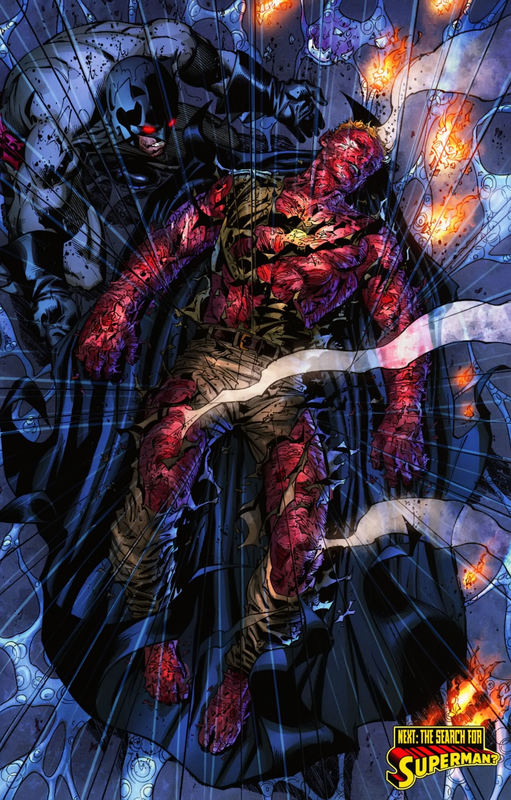
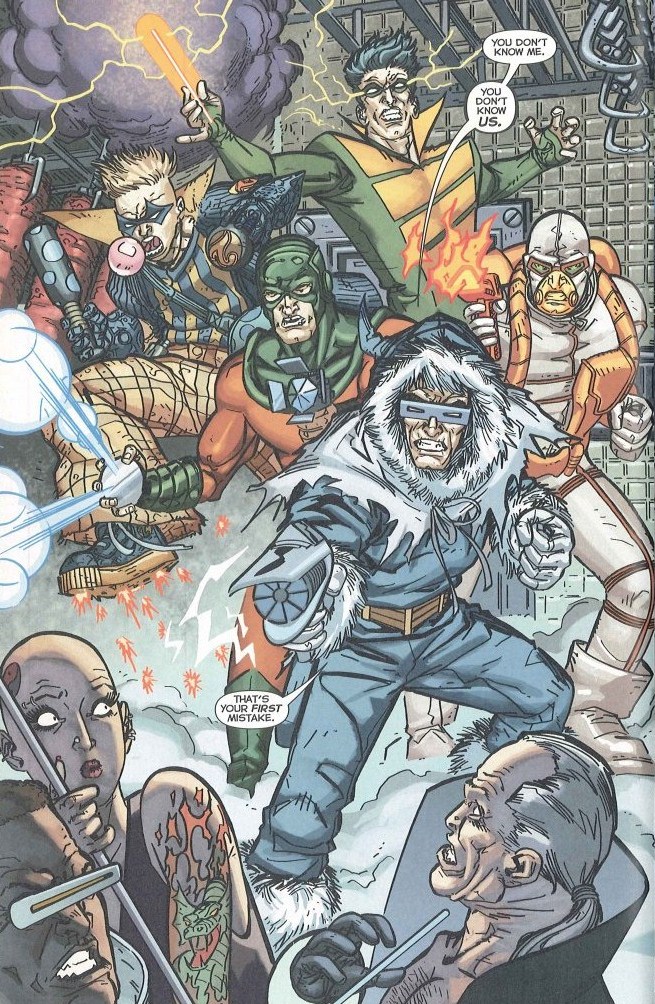
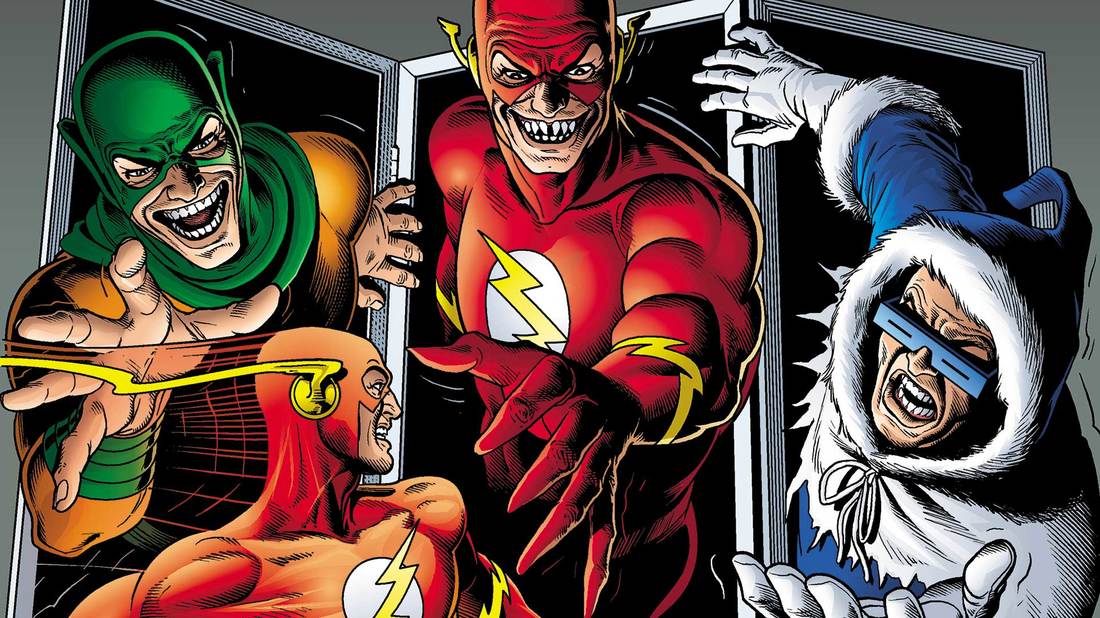
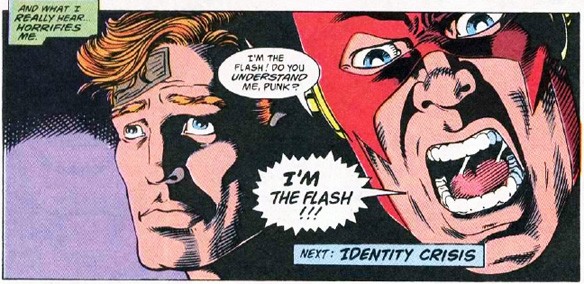
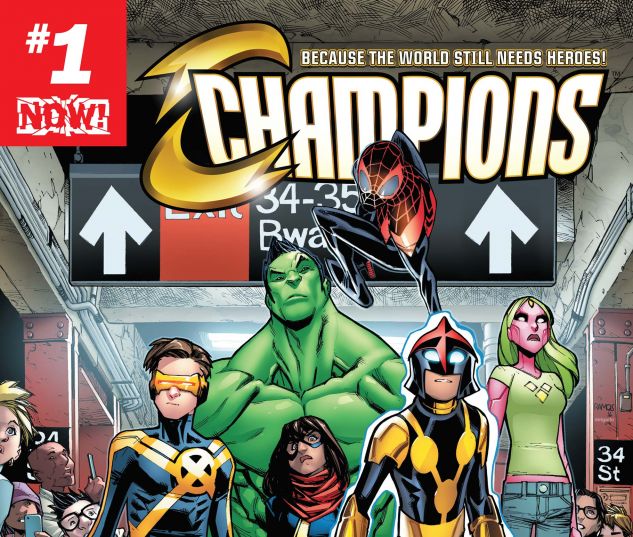
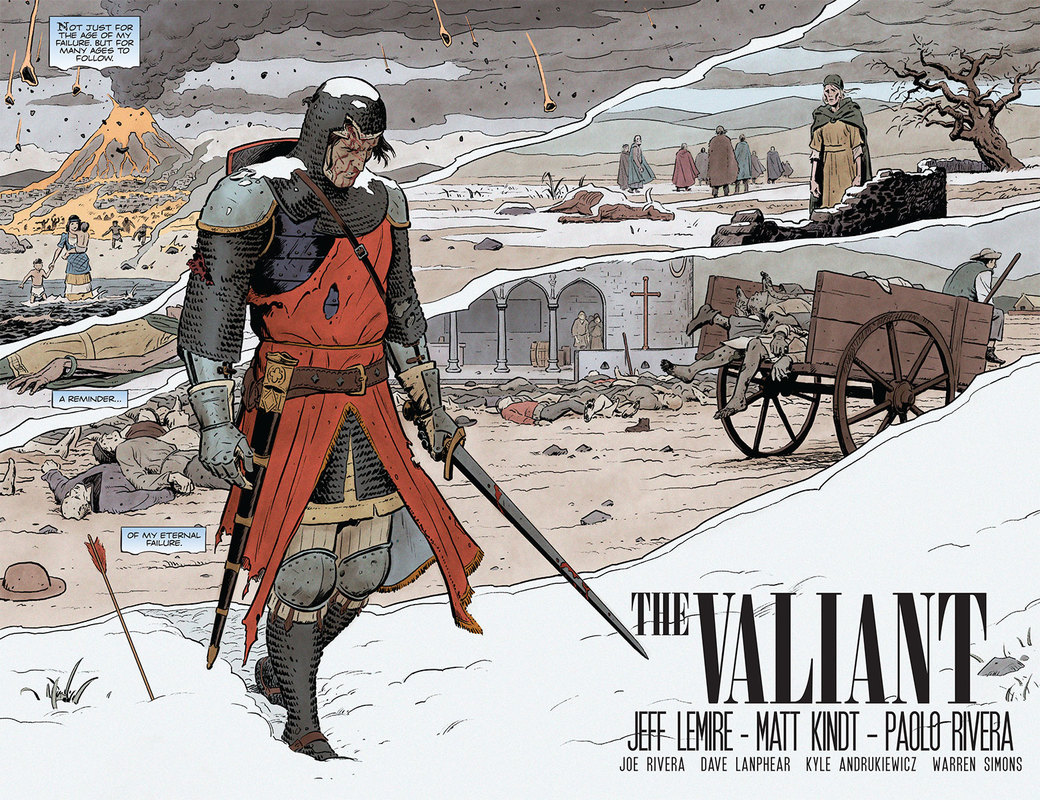
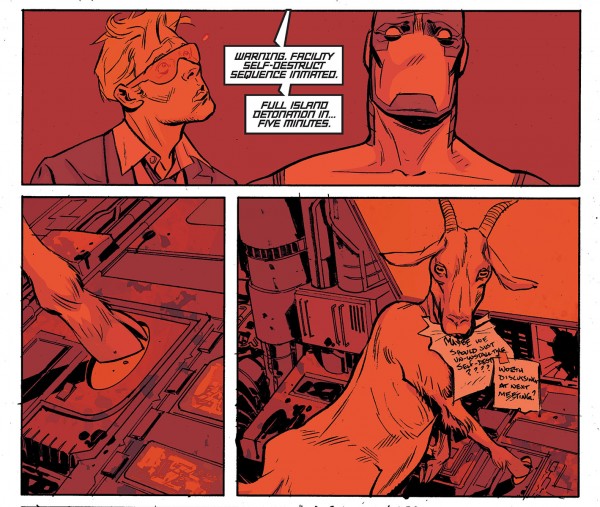
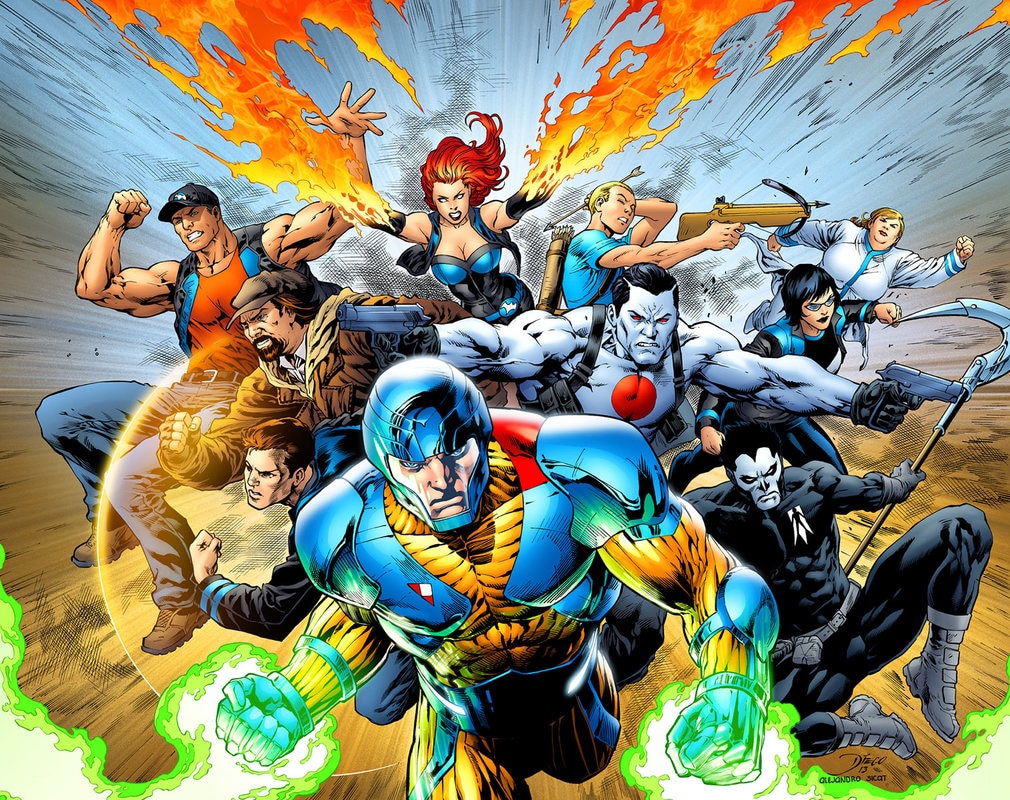
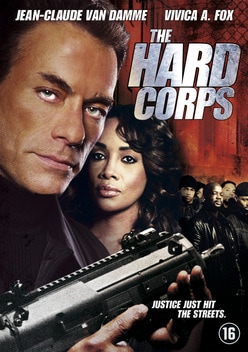
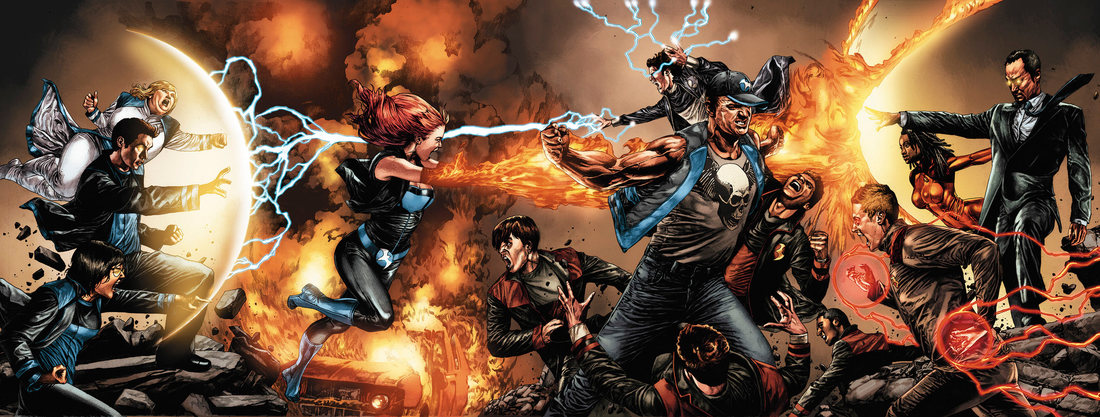

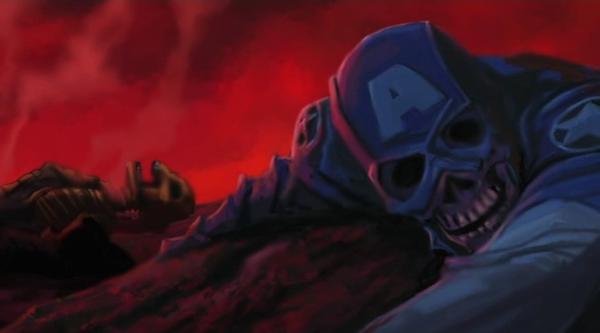
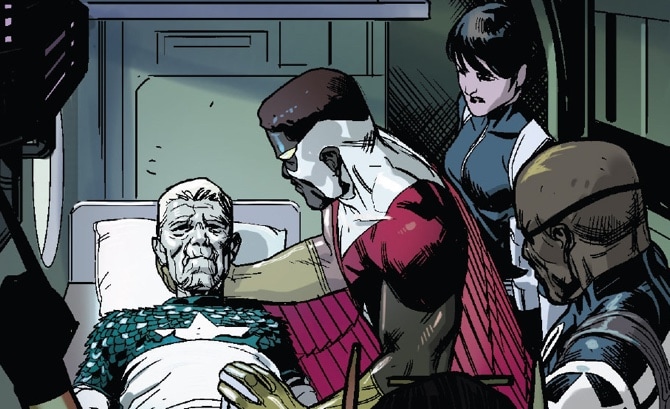
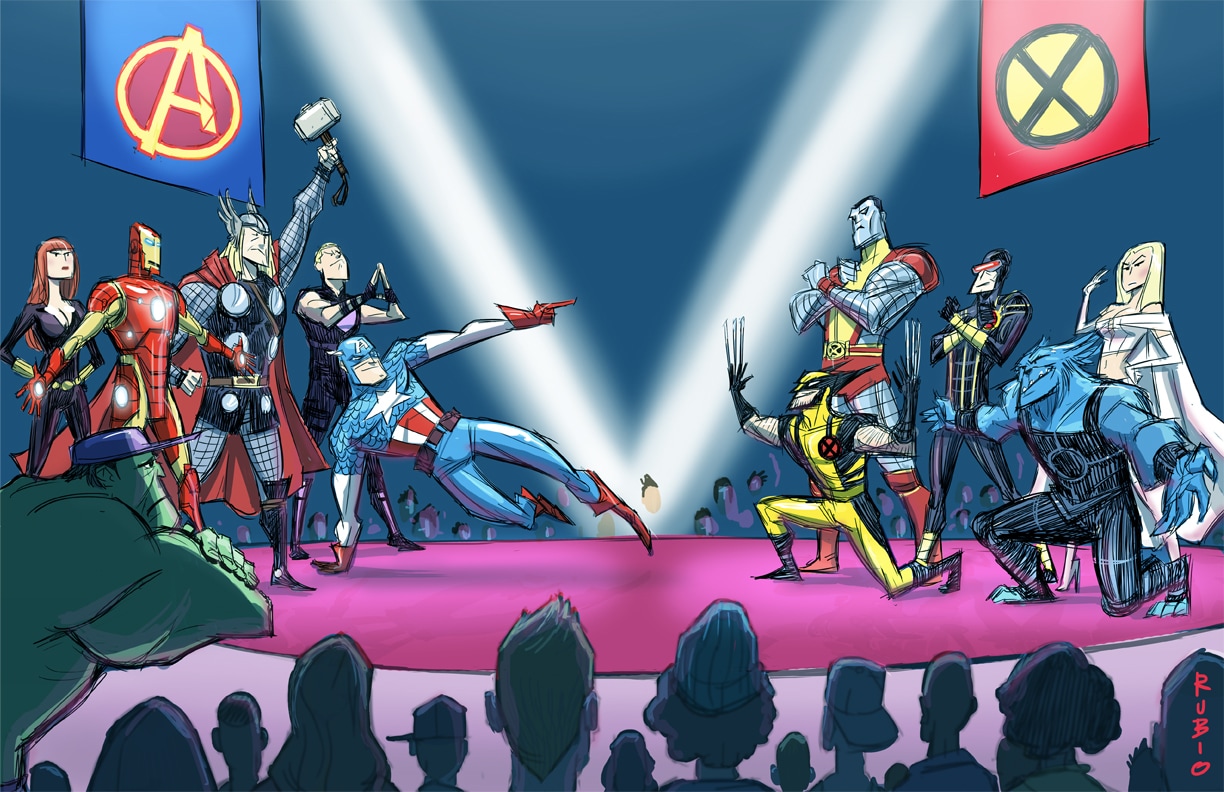
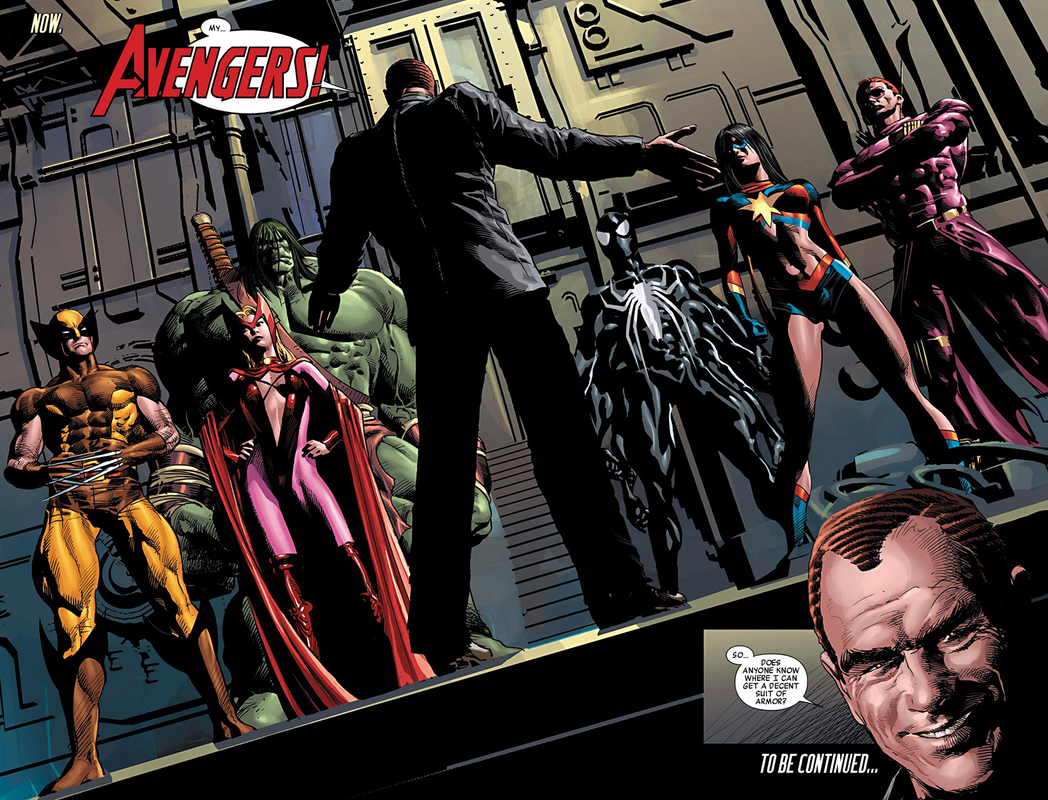

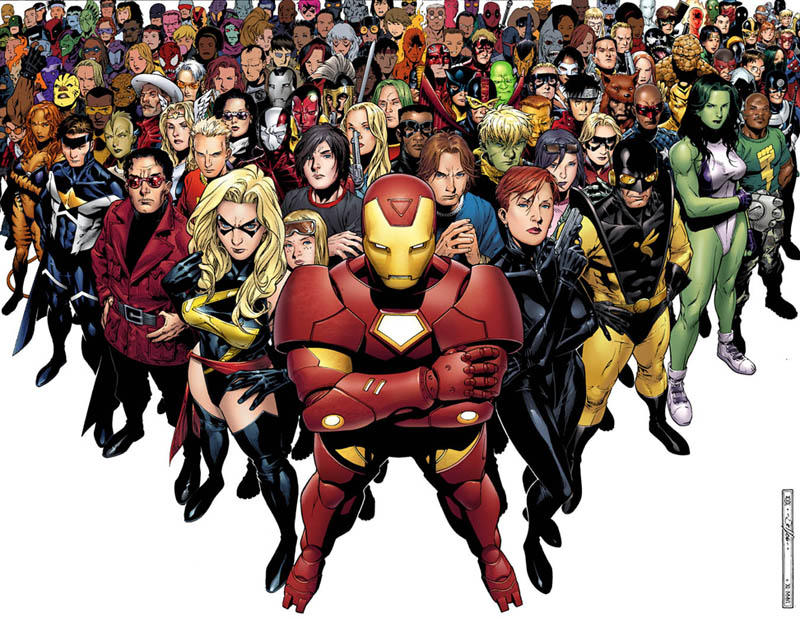
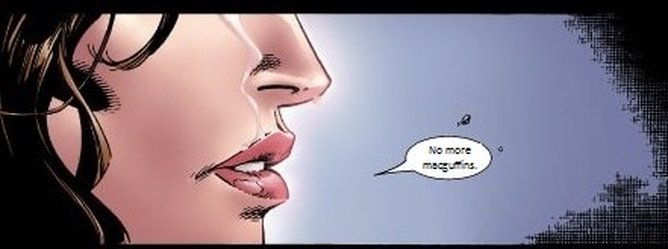

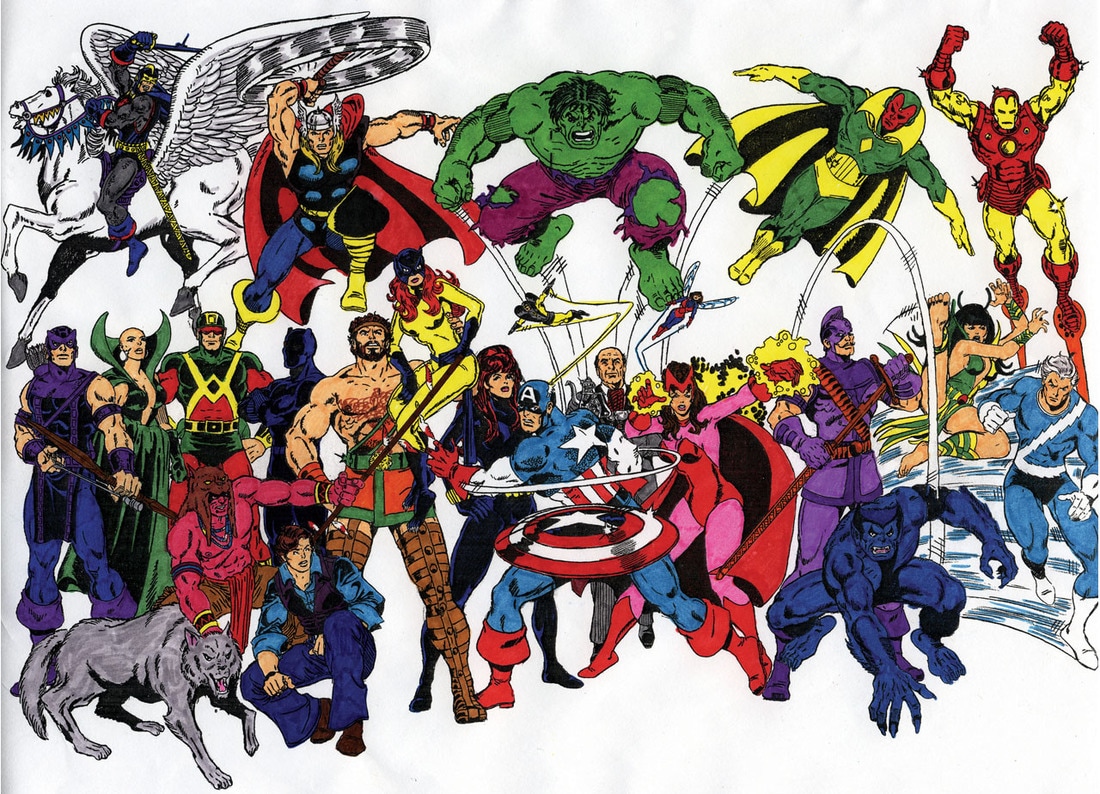
 RSS Feed
RSS Feed